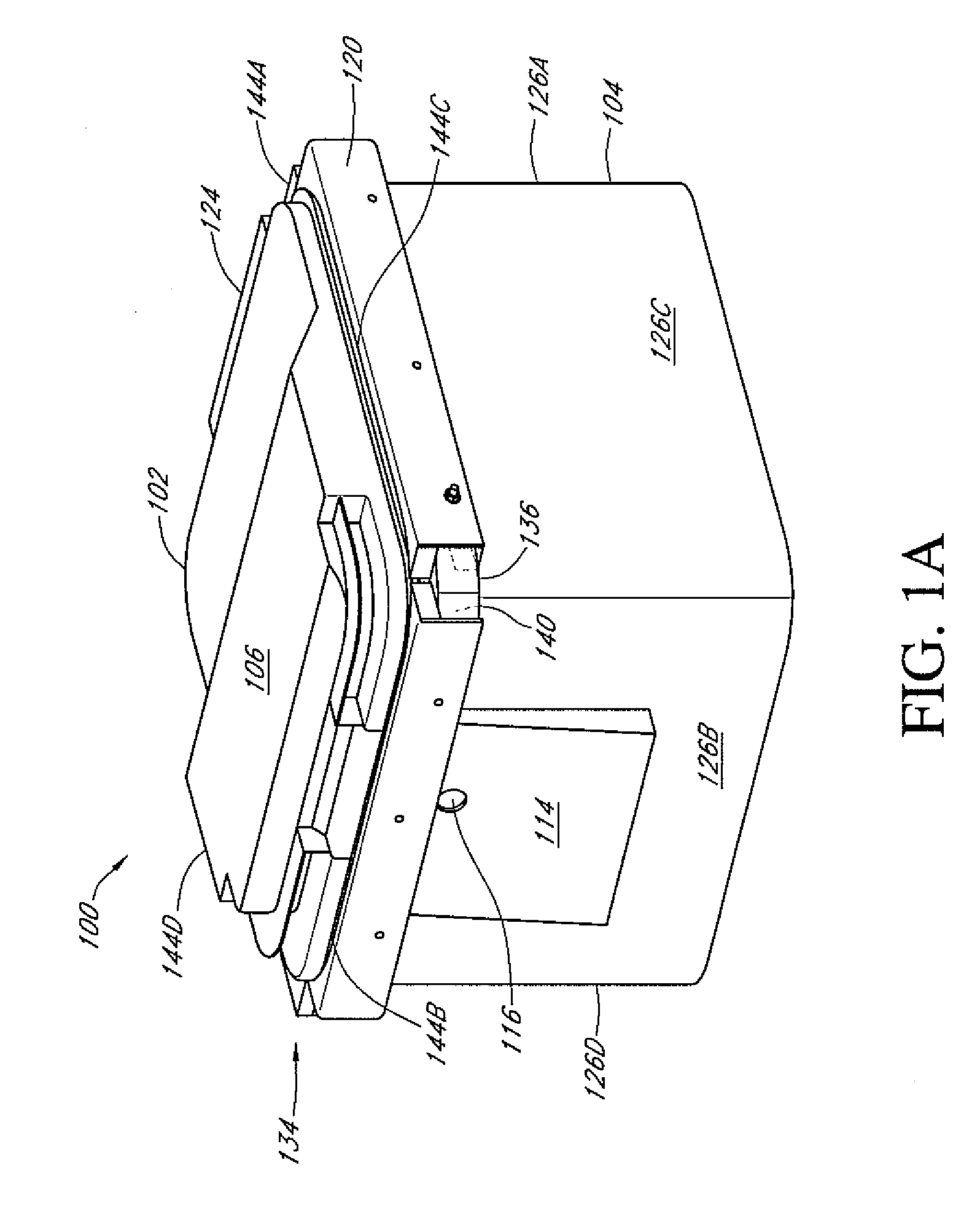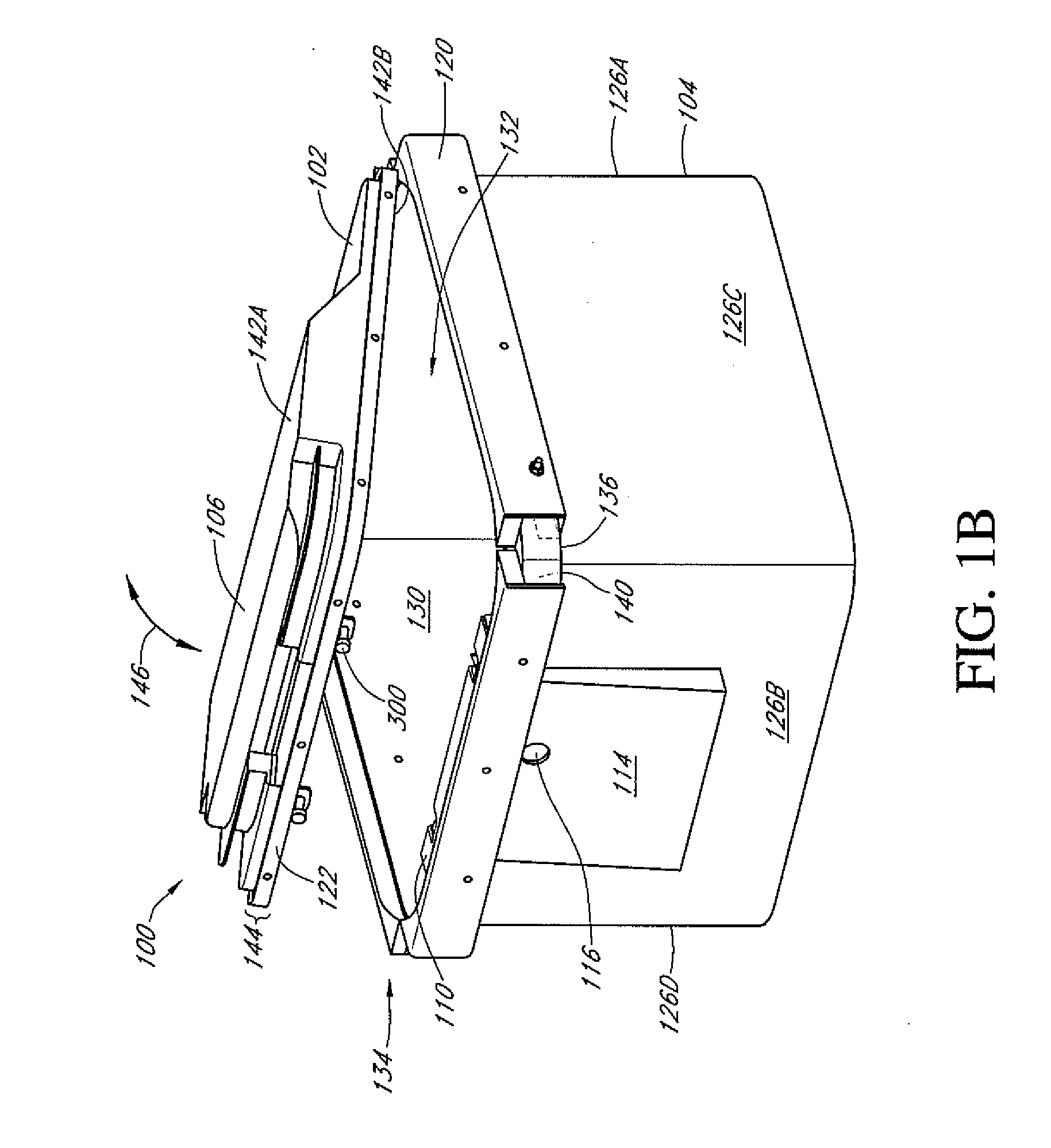Animal-resistant system
a technology of latching system and animal, applied in the field of latching system, can solve the problems of increasing the probability of an animal-human encounter, and increasing the probability of human-human contact, so as to reduce the risk of people or property they encounter, and increase the probability of animal-human conta
- Summary
- Abstract
- Description
- Claims
- Application Information
AI Technical Summary
Benefits of technology
Problems solved by technology
Method used
Image
Examples
Embodiment Construction
[0021] Some embodiments of the present invention relate to an animal-resistant system directed towards inhibiting the access of bears to food-containing receptacles. However, the embodiments of the invention may be applied to inhibiting the access of animals in general to containers.
[0022]FIGS. 1A-1B illustrate perspective views of one embodiment of an animal-resistant system 100. Generally, the system 100 is adaptable for use with a container 102 possessing a base 104 and a lid 106. The lid 106 is positioned inward of the base 104 in order to inhibit animals from accessing the contents of the container 102. Such containers 102 may include, but are not limited to, campground food storage boxes and outdoor trash receptacles, including business and household receptacles.
[0023] The system 100 comprises at least one latch mechanism 110 which secures the lid 106 to the base 104, at least one actuation member 112 (FIG. 2) which allows a user to manipulate the latch mechanism 110 to rele...
PUM
 Login to View More
Login to View More Abstract
Description
Claims
Application Information
 Login to View More
Login to View More - R&D
- Intellectual Property
- Life Sciences
- Materials
- Tech Scout
- Unparalleled Data Quality
- Higher Quality Content
- 60% Fewer Hallucinations
Browse by: Latest US Patents, China's latest patents, Technical Efficacy Thesaurus, Application Domain, Technology Topic, Popular Technical Reports.
© 2025 PatSnap. All rights reserved.Legal|Privacy policy|Modern Slavery Act Transparency Statement|Sitemap|About US| Contact US: help@patsnap.com



